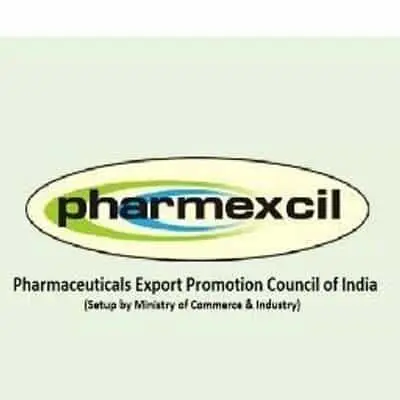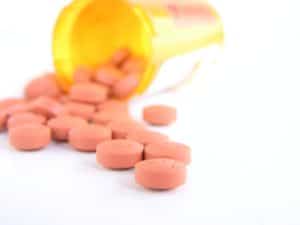Last Updated on January 20, 2024 by The Health Master
Pharmexcil
In an effort to uphold the highest standards of patient safety, the Pharmaceuticals Export Promotion Council of India (Pharmexcil) has strongly recommended member companies to utilize the diethylene glycol (DEG) toolkit developed by United States Pharmacopoeia (India) Pvt Ltd (USP).
This virtual resource, provided free of charge, is continuously updated from the USP Rockville, USA Office, making it an invaluable tool for pharmaceutical manufacturers.
Uday Bhaskar, the director general of Pharmexcil, emphasized the toolkit’s significance, stating that it plays a crucial role in ensuring the safety and quality of pharmaceutical products.
USP’s initiative
In response to this alarming discovery, the USP took the initiative to develop a toolkit aimed at manufacturers, regulators, and country pharmacopoeias.
The toolkit specifically addresses the challenges associated with diethylene glycol (DEG) and ethylene glycol (EG) contamination, particularly in allergy, cold, and cough medicines.
DEG and Its Consequences
DEG is not to be taken lightly, as it can lead to acute renal failure, posing a serious threat that may result in permanent disability or death.
Despite being preventable through appropriate quality controls and risk assessments, these incidents underscore the importance of stringent measures in pharmaceutical manufacturing.
How DEG Enters the Supply Chain
The entry of DEG into the pharmaceutical supply chain can occur through various avenues, including mislabeled products, human error, or intentional adulteration by manufacturers or suppliers.
While manufacturers in certain countries adhere to rigorous testing of raw materials, active pharmaceutical ingredients (APIs), and inactive ingredients (excipients) to detect the presence of DEG, low- to middle-income countries may lack the same quality assurance requirements and resources.
Need for Strong Quality Controls in the Supply Chain
Traditionally, quality assurance has concentrated on end-product testing.
However, given the intricacies of the pharmaceutical supply chain, there is a growing recognition of the need for stronger regulatory focus on quality controls for testing and analysis of raw materials, APIs, and inactive ingredients.
USP collaborates with other country pharmacopoeias, regulators, and industry stakeholders to enhance supply chain resilience, emphasizing the critical role such collaboration plays in preventing tragic incidents related to DEG contamination.
USP’s Mission
As an organization with a mission to improve global health through public standards, USP is committed to providing support to all stakeholders involved in the global medicine manufacturing supply chain.
In line with this commitment, USP is pleased to share a free toolkit designed for measuring and controlling levels of DEG and EG.
The toolkit includes relevant chapters, monographs, and additional resources.
Furthermore, USP invites stakeholders worldwide to join in advocating for quality throughout the medicine supply chain, underscoring its role as an APEC Center of Excellence.
Collaborative efforts
The collaborative efforts of organizations like Pharmexcil and USP are pivotal in safeguarding patient safety and upholding the integrity of pharmaceutical products.
By leveraging tools like the DEG toolkit, the industry can mitigate risks associated with DEG contamination and contribute to a more resilient and secure pharmaceutical supply chain.
Disclaimer: This article contains information derived from the source mentioned below. Our team utilized an AI language model to rewrite and present the news or article in a unique format.
FAQs
- What is DEG, and why is it a concern in pharmaceuticals?
DEG, or diethylene glycol, is a chemical that can lead to acute renal failure and even death. It becomes a concern in pharmaceuticals when it contaminates medicines, posing a serious risk to patient safety.
- How can pharmaceutical companies in low- to middle-income countries address DEG contamination?
Pharmaceutical companies in such countries can enhance their quality controls, especially in testing raw materials and ingredients, and collaborate with international organizations like USP for guidance.
- What steps can regulators take to prevent DEG-related incidents in the pharmaceutical supply chain?
Regulators should focus on strengthening regulatory controls for testing and analysis of raw materials, APIs, and inactive ingredients, ensuring the highest quality standards are maintained.
- Why is collaboration between organizations crucial in preventing tragic incidents related to DEG contamination?
Collaboration between organizations like Pharmexcil and USP enhances supply chain resilience, allowing for the sharing of resources, knowledge, and best practices to prevent DEG-related incidents.
- How can stakeholders get involved in advocating for quality in the medicine supply chain?
Stakeholders can actively participate by utilizing resources like the USP toolkit, staying informed about global health standards, and supporting initiatives that prioritize patient safety and quality in pharmaceutical manufacturing.
USFDA Approval granted for Ofloxacin Otic Solution
India’s demand for faster USFDA inspections: A Deep Dive
Challenges Faced by MSME Pharma Industries on Revised Schedule M
Pharma Revolution: UP’s Grand Plan for Lalitpur’s Pharma Park
NPPA is set to fix the ceiling prices for more than 200 formulations
Biopharmaceutical Affordability: Decoding the Complex Equation by Dr Tumbagi
Drug recall: Dr Reddy’s recalls over 8,000 bottles of generic drug due to packaging error
NPPA fixed retail price of 19 formulations: January 2024
DCGI to Blood Centres: Comply with revised guidelines for recovery of processing charges
The Indian Pharmacopoeia Commission: Bidding for Pharmaceutical Impurities











